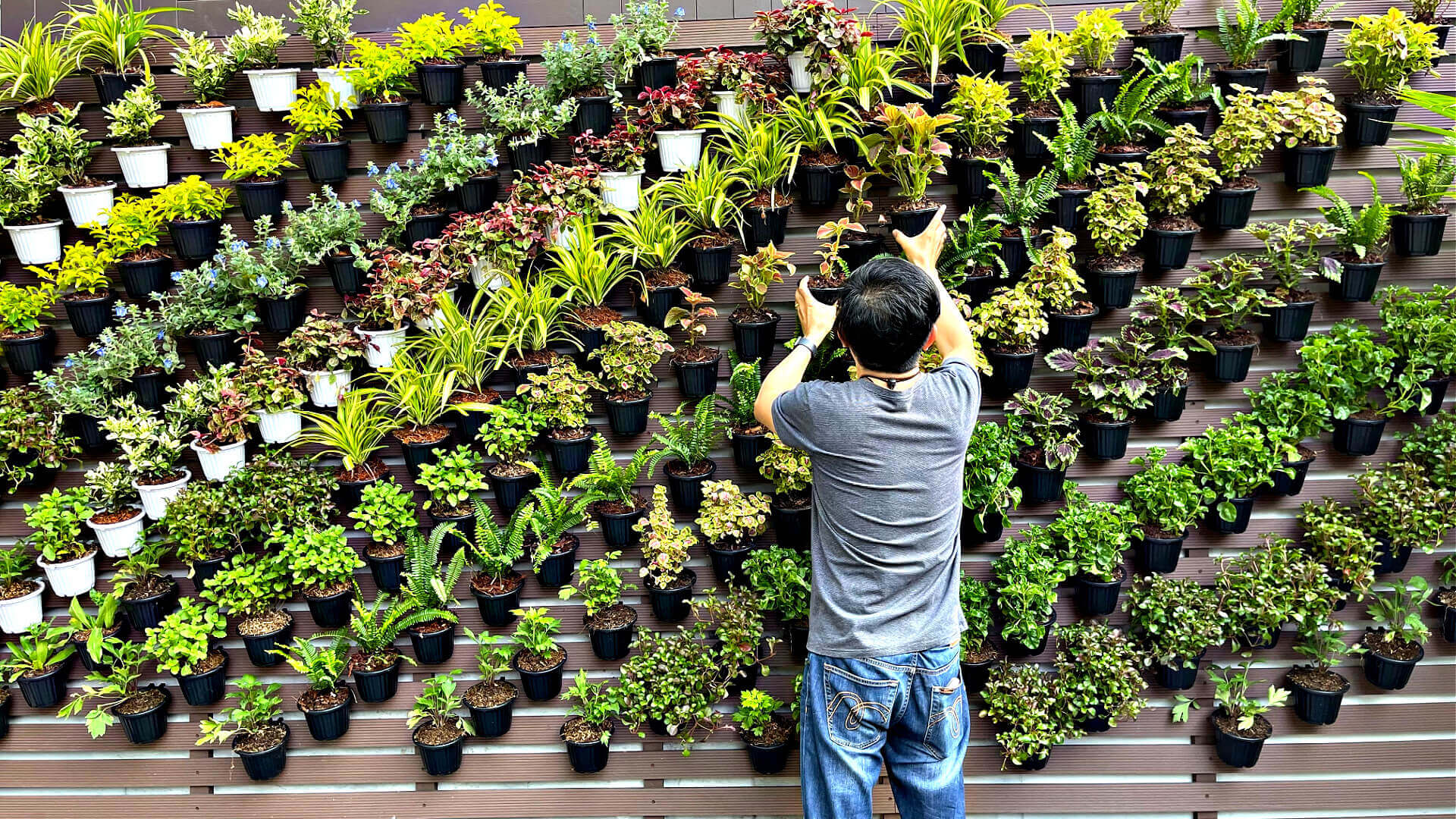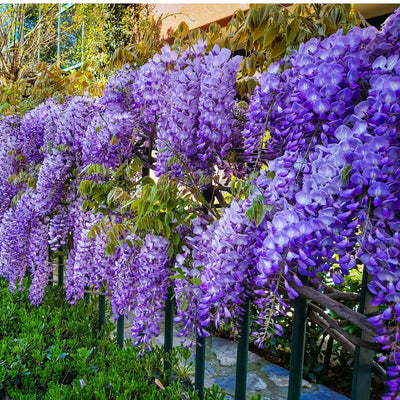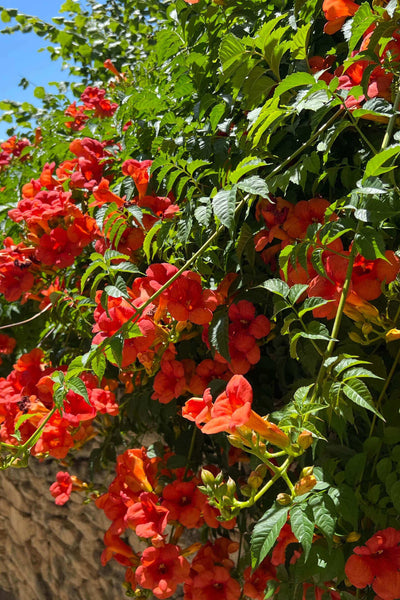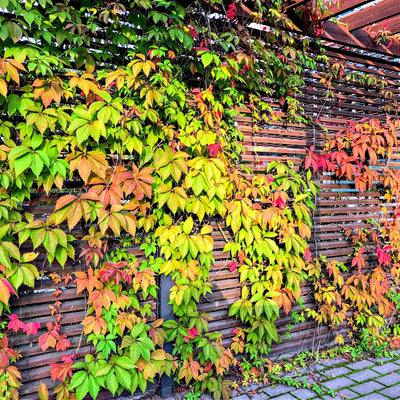Vertical Gardening Maximizing Your Space
Vertical gardening is a dynamic and space-efficient approach gaining popularity among urban dwellers, those with limited outdoor space, and garden enthusiasts seeking to add an aesthetic appeal to their environment. This guide delves into the myriad aspects of vertical gardening, exploring how to maximize space through innovative vertical planting techniques.
The Essence of Vertical Gardening
Vertical gardening is growing plants upward rather than spreading them out horizontally. This method not only saves space but also transforms gardening into a form of art, creating living walls and green spaces in unexpected places. It encompasses a variety of techniques, including trellises, wall planters, hanging baskets, and tower gardening, among others.

Benefits of Vertical Gardening
One of the most significant advantages of vertical gardening is its space-saving nature. It is particularly beneficial for city dwellers or those with limited yard space, as it allows for a lush garden in a small footprint. Vertical gardens can also help improve air quality and reduce noise pollution in urban areas. Additionally, they can act as natural insulation for buildings, helping regulate temperature and lowering energy costs. Vertical gardens are not just practical; they offer aesthetic value, adding greenery and beauty to indoor and outdoor spaces. They can transform bland walls into vibrant features and create a sense of privacy and tranquility.
Planning Your Vertical Garden
The first stage in making a vertical garden is planning. Consider the location - whether it's an indoor or outdoor space, the amount of sunlight the area receives, and the climate. Different plants have varying light and temperature requirements, so these factors will dictate what types of plants will thrive in your vertical garden.
Choosing the Right Plants
When selecting plants for a vertical garden, consider their growing conditions and maintenance needs. Some popular choices for outdoor vertical gardens include succulents, ferns, ivies, and various flowering plants like petunias and begonias. Houseplants like pothos, philodendrons, and spider plants are ideal for indoor vertical gardens due to their low light and maintenance requirements.

Vertical Garden Structures
The structure of your vertical garden will depend on your space, budget, and design preference. Common options include:
Trellises and Arbors: These are ideal for climbing plants like vines clematis, or vegetables like peas and beans. Wall Planters and Pockets: These can be attached to walls and come in felt, plastic, or wood. They are great for creating a living wall effect. Hanging Baskets: Perfect for indoor and outdoor use, hanging baskets can display trailing plants beautifully. Tiered Shelves and Racks: These can house multiple potted plants in a cascading fashion, maximizing vertical space.
Soil and Watering Considerations
Soil in vertical gardens tends to dry out faster, so choosing a moisture-retaining potting mix is crucial. Additionally, watering a vertical garden can be more challenging than traditional gardens. Drip irrigation systems or self-watering planters can effectively ensure consistent moisture levels. For simpler setups, a watering can with a long spout or a hose with a gentle spray setting can work well.
Maintenance and Care
Regular maintenance is vital to keep your vertical garden thriving. This includes routine watering, pruning, deadheading flowers, and checking for pests and diseases. Fertilization is also essential, and it's advisable to use a balanced, water-soluble fertilizer to provide necessary nutrients.
Overcoming Challenges
Vertical gardens face unique challenges, such as uneven water distribution and potential damage to walls from moisture. Proper installation and maintenance can mitigate these issues. For instance, waterproofing barriers can protect walls, and careful plant selection can prevent overgrowth that might damage structures.
Indoor Vertical Gardening
Indoor vertical gardens are a great way to bring the outdoors inside. They can purify the air and create a calming, natural environment in your home. When designing an indoor vertical garden, consider the light requirements of your chosen plants and whether supplemental lighting is needed. Also, be mindful of the potential for water damage to floors and walls.
Environmental Benefits
Vertical gardens can have a positive environmental impact. They contribute to biodiversity in urban areas, provide habitats for beneficial insects, and help to filter pollutants from the air. They can play a role in urban heat island mitigation on a larger scale.
Aesthetic and Psychological Benefits
There's a significant aesthetic and psychological upside to vertical gardening. Living walls and green spaces are visually stunning and can make any area more inviting. Moreover, gardening itself is therapeutic, offering a relaxing and rewarding hobby.

Advanced Techniques
Hydroponic or aeroponic systems can be incorporated into vertical gardens for the more adventurous gardener. These soilless systems use nutrient-rich water solutions to farm plants and can be positively efficient and productive.
Community Engagement
Vertical gardens can be a focal point for community engagement and education. They provide opportunities for learning about sustainability, urban agriculture, and the importance of green spaces in cities.
The Future of Vertical Gardening
Vertical gardens may become an essential element of city planning as urbanization continues to increase. They offer a solution for incorporating green spaces in densely populated areas and can significantly create more sustainable and livable urban environments.
Personalizing Your Vertical Garden
The beauty of vertical gardening lies in its versatility and the ability to personalize it to fit your style and space. The possibilities are endless, whether it's a small herb garden in your kitchen, a floral display on your balcony, or a large living wall in your backyard.
Long-term Care and Adaptation
Like any garden, a vertical garden evolves. Plants may need to be replaced or rearranged as they grow and change. Regular assessment and adaptation are crucial to maintaining a healthy and aesthetically pleasing vertical garden.
Native Plants Can Be Grown In A Vertical Garden
Incorporating native plants into vertical gardening supports local ecosystems and ensures a resilient and low-maintenance garden. The suitability of native plants for vertical gardening depends mainly on the specific climate and region. For instance, ferns like the Western Sword Fern and vine species like the Evergreen Clematis are excellent choices in the Pacific Northwest. These plants are adapted to the region's moist, temperate climate and can thrive in vertical setups with minimal care.
In warmer, drier climates like the Southwestern United States, native succulents and climbing plants like the Trumpet Vine and Coral Honeysuckle are more appropriate. These plants are accustomed to less water and can thrive in the vertical gardens of these arid regions.

In the Eastern United States, native vines such as the Virginia Creeper or the American Bittersweet are ideal for vertical gardens. These plants are used to the climate and can provide lush, green coverage with the added benefit of seasonal color changes.
Each of these native plants adapts well to vertical gardening constraints and provides habitat and food sources for local wildlife, including pollinators and birds. Choosing native plants for vertical gardening is a sustainable and ecologically responsible practice, fostering local biodiversity and creating a natural, harmonious aesthetic in garden spaces.
In conclusion, vertical gardening is a creative and efficient way to enjoy gardening in limited spaces. It offers environmental benefits, adds aesthetic value, and provides a unique gardening experience. With proper planning, plant selection, and maintenance, anyone can create a thriving vertical garden and enjoy its many benefits. Whether you are a seasoned gardener or a beginner, vertical gardening offers an exciting way to engage with nature and beautify your living space.



